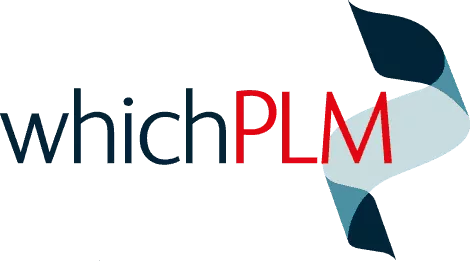
In this blog Mark Harrop, WhichPLM CEO & Founder, discusses how to successfully approach change within an organisation. Change management is an inevitable part of any modern process management, and businesses need to deal with it in the correct way.
In the fashion industry, and indeed many others, you can never afford to stand still. You need to constantly challenge and re-evaluate your business processes, including those of your end-to-end supply-chain partners who will impact your business. Change isn’t an option if you want to stay at the top of your market – it’s the only option. Keeping up to date is a continuous process; as soon as you’ve reached an end point it’s time to start another beginning.
All too often companies and their chosen PLM vendors will focus on implementing the PLM solution in the shortest possible timeframe, without enough attention being given to process mapping and re-engineering linked to potential process improvements and return on investment. There are many reasons why this might be the case, for example timelines, cost, fixed priced projects, ignorance of process maturity improvement levels (users and vendors) often linked to vendors’ so called best-in-class solutions.
Change management is not only inevitable but also critical as part of any modern PLM process re-engineering project. In all change management projects linked to PLM & E-PLM the degree of success is directly attributable to the amount of buy in that you can obtain from the people that will be most affected. Success is also linked to the clarity and management of their expectations.
It’s a fact that people don’t like change; it’s human nature to push back when someone wants to change your role and the business status quo. It’s important to help people through times of change and be mindful of the adverse effects that these changes can have on someone’s well-being and morale.
As part of any PLM project, you will first need to look carefully at your current processes and understand where they are in terms of their maturity when compared to best practice and best-in-class PLM software, measured across the 60+ processes that are typically found within a modern PLM platform. For example: you may have a particular process within a vendor’s PLM solution that is measured as a level 1 (being ‘acceptable’). Alternatively you may use a different solution that will have been awarded a level 5 (being “advanced”) for the same process. That can lead to greater user acceptance and value for your business.
In terms of change management it’s important at the early stage of your project to share the recommended changes with each employee that will be affected. And consider both the upstream and downstream effects on other people’s roles and data. Allow each employee to express their thoughts and feelings, linked to the challenges and potential changes that are planned.
If you try to bypass this process and simply instruct users to accept the change then you risk that they will go against the desired change and potentially sabotage the process. It really is important to get users on-board from the outset; prove and sell the change as a positive step. Even if this is not the case and their role changes with increased responsibility and effort, it’s equally important to explain carefully why their role is critical to the rest of the organisation and team players. Unless you ensure people fully understand the benefits then you risk resentment, or people becoming disengaged from the PLM project altogether.
It’s not critical to focus all of your efforts on getting perfect buy-in to the changes you and the rest of the PLM project team desire. On each process you need to demonstrate to the users that you completely understand the process – both predecessor and subsequent processes including data flow – and allow for other people’s input into the suggested process change. People need to know you understand their thoughts and their feelings before they will listen to your persuasion.
Allow people to constructively criticise the suggested change and make them feel safe to express dissent or even criticism without them being labelled as a negative team player. Avoiding their concerns will risk user buy-in. You could potentially miss important information/data and could potentially create process owners that will simply let you fail or, worse, actively go against the project!
Give each process role owner as much opportunity as possible to solve problems together with the project team; ask for their help in finding solutions or workarounds and take constructive action. Remember: they own the current process and will have plenty of ideas on how to improve matters, so working together and taking constructive action, is perhaps the strongest antidote to that fear of change and the feeling of helplessness. Engaging role owners in constructive action plays a central role in keeping morale up in times of change.
To facilitate process role owners taking constructive action and feeling like winners during difficult times, establish and communicate clear short-term goals and objectives. This will not only help to build confidence in the PLM project, but will also give a feeling of a partnership with the PLM project team as well as a sense of purpose for the process role owners.
Communication is a very important part of any PLM project. Make sure employees and partners involved know what is going at each and every step of the way. When people are feeling vulnerable, their tolerance for ambiguity decreases dramatically. To feel safe and secure, they need to know as much as possible about what is going on. Consider ways of keeping your employees & partners up to date on the project and don’t forget to include everyone in your Supply-Chain.
Oftentimes I hear stories of retailers or brands working on a PLM project in their headquarters and forgetting their supply-chain partners, their processes and their solutions, (I often refer to these companies as having bought PLM but only implemented PDM) only to find negativity toward the new project when it’s time to start to share the new, so called ‘end-to-end’ PLM solution with the rest of your Supply-Chain partners. So, include the end-to-end processes and consider regular email notifications, newsletters, coffee break updates, stand up face-to-face meetings, supply briefings, posters etc.
Always allow your audience the opportunity to provide continuous constructive feedback. Remember: PLM is an ever-changing process of re-engineering that requires constant input from all Supply-Chain partners.
PLM projects, relative to the size of the organisation, can take many months or even years to fully deploy. It’s important that everyone in the business is kept up to date on progress of the implementation and understands what’s happening on the project both pre and post go-live.
When talking about your PLM vision and the challenges that the business is facing, use as many stories and analogies as possible rather than PowerPoint slides filled with implementation plans, statistics and facts. Storytelling is a much more successful way of getting your message across.
When asking process role owners for input and ideas, clearly define the parameters of each role owner’s input and involvement. If you don’t, they will feel “used” if their input is not incorporated. If this is the case, then explain why their suggestions cannot happen – perhaps it’s linked to a technology improvement change that’s currently outside of the knowhow, so then it’s a matter of NPI (New Process Introduction) education and buy-in.
At the end of each successful milestone, celebrate the wins and share examples of benefits to the entire business. People, by their very nature, like to follow the winning teams. Celebrate the wins both formally (through your communication channels) and informally – people appreciate a special pat on the back and a big sincere, “thank you”.
This short post is a reminder to companies that are getting ready to undertake a PLM project to consider carefully the subject of “change management”, before running ahead into a PLM implementation, only to find that you could face major obstacles of change!





